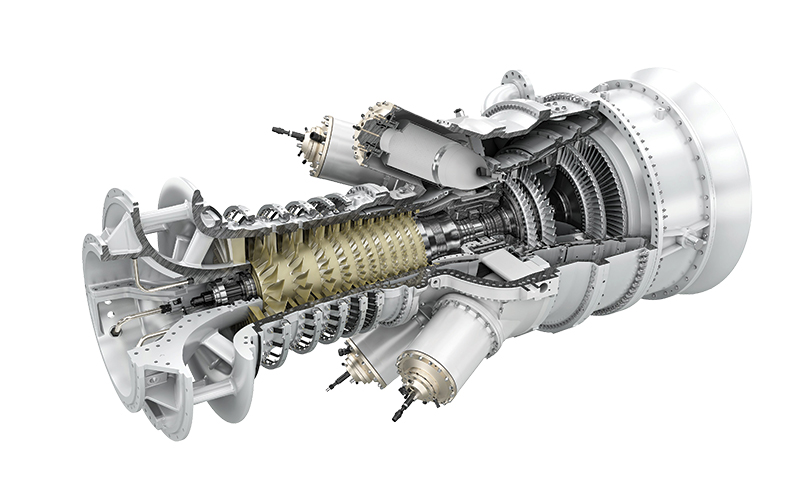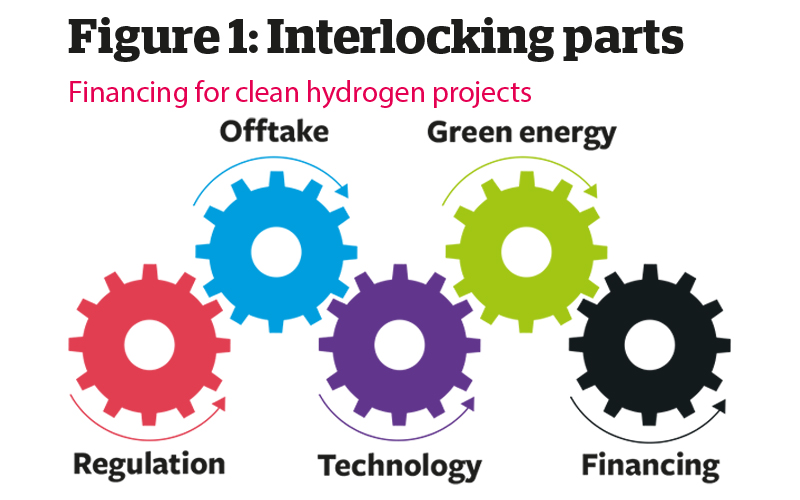The power of hydrogen
Professor Armin Schnettler at Siemens Energy on paving the way for hydrogen-based energy systems

The dictionary defines ‘transition’ as a process of changing from one state or condition to another. But in 2019, the Oxford English Dictionary attributed another meaning to this word as ‘a name for a movement advocating a shift from dependency on fossil fuels to sustainable, self-sufficient living in communities’.
For us, the energy transition is just that: moving from fossil-based fuels to clean, low and zero-carbon replacements. And, as the original definition suggests, we have a time period in which to complete this process.
Climate change requires the decarbonisation of economic systems worldwide. This affects the energy industry, accounting for around 40% of global carbon dioxide emissions and other sectors such as transport and industry.
Renewable energy cannot meet this goal alone – if there is no wind, there is no power, and if there is too much wind, grids can become overloaded. Additionally, some sectors – such as the steel industry, long-haul transport, ships and planes – are difficult to electrify. It needs solutions that can store, transport and convert energy from solar and wind power.
Green hydrogen can be the key to minimising CO2 emissions across sectors and achieving climate neutrality in the long term. Green hydrogen, produced by electrolysis of water using electricity from renewable energy sources, is the end goal, but so far, production is too expensive and complex for large-scale use.
Alongside green hydrogen, industry also uses grey and blue hydrogen. Grey hydrogen currently accounts for 90% of the hydrogen used worldwide and is produced from fossil fuels, resulting in CO2 emissions. Blue hydrogen is also produced from natural gas, but the resulting CO2 is captured and stored and does not end up in the atmosphere.
Making gas turbines hydrogen-compatible
While gas-fired power plants will be needed for security of supply in the long term on the road to decarbonisation, we’re working to make sure they’re ready for the future fuels that will be used to power them.
We are developing our gas turbines to operate using up to 100% hydrogen by 2030. This will make them an integral part of a climate-neutral energy system and set our customers on track for the new hydrogen economy, as our existing gas power plants can be retrofitted for hydrogen operation without replacing core components.
We’re delighted that we are part of the world’s first integrated Power-to-X-to-Power hydrogen demonstration project. HYFLEXPOWER, based in France, will demonstrate how green hydrogen from electrolysis can serve as a flexible means of storing energy which can then be used to power a high-power Siemens Energy industrial gas turbine.
During two demonstration campaigns, the facility will be powered by a mix of natural gas and hydrogen, ultimately aiming for up to 100% hydrogen operation. This would save up to 65,000 tons of CO2 per
year for an industrial gas turbine (such as an SGT-400) at baseload operation.
However, while these lighthouse projects provide the operational experience in practice, to truly start the hydrogen market we need to see government policies and frameworks implemented to meet the ambitious global climate reduction targets: renewable power must become cheaper, and CO2 more expensive.

The future of hydrogen
Green hydrogen cannot replace fossil fuels tomorrow – there is a lot more work needed to reach that scale. Nevertheless, it offers enormous potential for reducing climate-damaging emissions in all sectors through sector coupling with Power-to-X technologies.
To achieve the UN’s energy-related Sustainable Development Goals, 7.92 megatons of hydrogen would have to be produced globally in 2030, with low CO2 emissions. In 2019, however, the International Energy Agency’s Hydrogen Tracking Report suggested only 0.36 megatons per year had been produced.
For the sector to grow at the speed and scale needed to meet the decarbonisation challenge, public policies must create the planning and investment security needed for developers, and they must have access to clean energy to enable green hydrogen growth (see Figure 1).
Interest in hydrogen is growing, with demand increasing rapidly. It is clear the next significant transformation in the energy transition will be based on the hydrogen economy.
By Professor Armin Schnettler, Executive Vice President New Energy Business, Siemens Energy






Follow us
Advertise
Free e-Newsletter